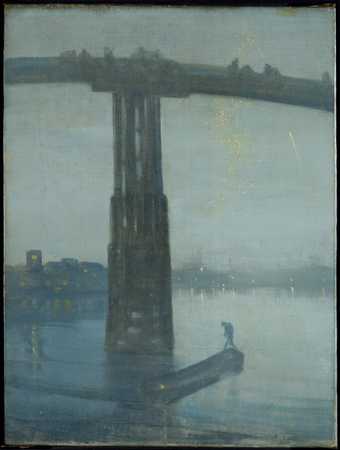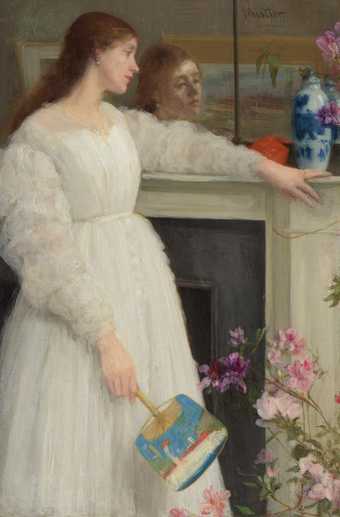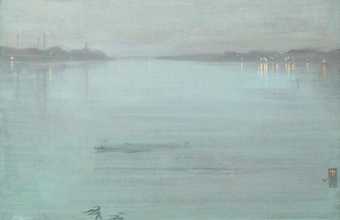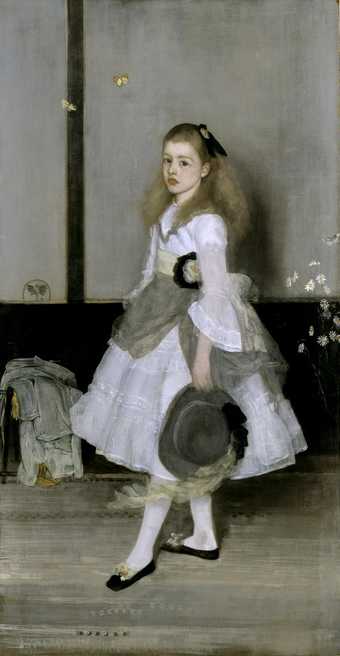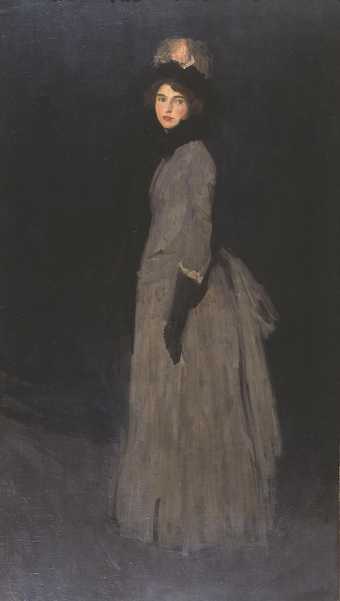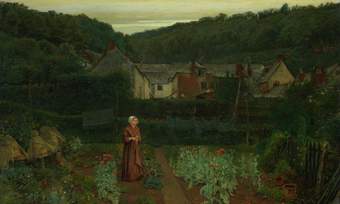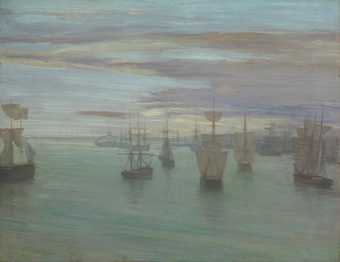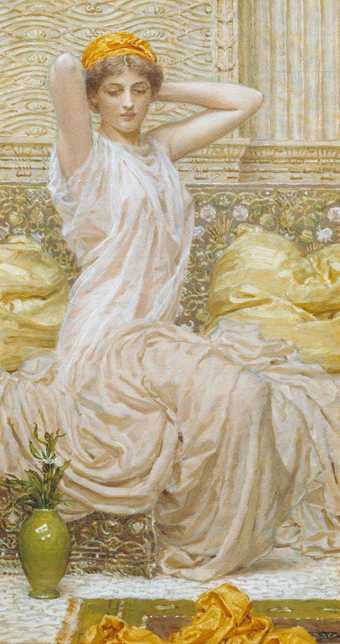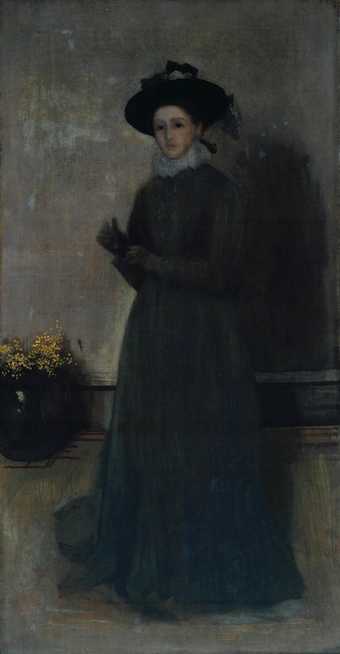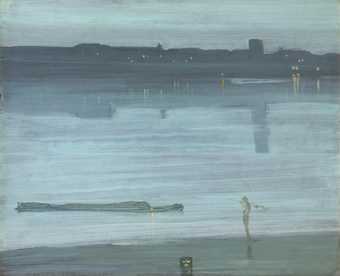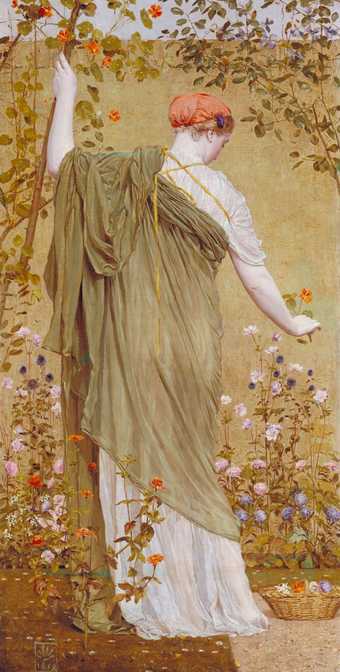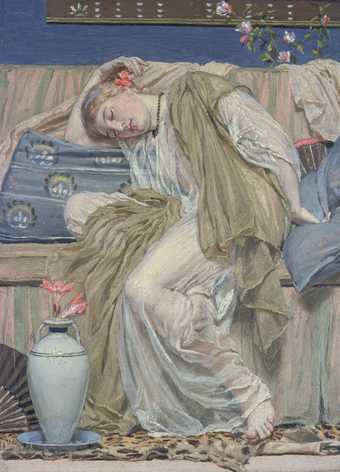
Not on display
- Artist
- James Abbott McNeill Whistler 1834–1903
- Medium
- Oil paint on canvas
- Dimensions
- Support: 1391 × 1854 mm
frame: 1701 × 2158 × 75 mm - Collection
- Tate
- Acquisition
- Purchased with the aid of contributions from the International Society of Sculptors, Painters and Gravers as a Memorial to Whistler, and from Francis Howard 1950
- Reference
- N05971
Summary
This picture derives from one of six oil sketches that Whistler produced in 1868 as part of a plan for a frieze, commissioned by the businessman F.R. Leyland (1831-92), founder of the Leyland shipping line. Known as the 'Six Projects', the sketches (now in the Freer Art Gallery, Washington) were all scenes with women and flowers, and all six were strongly influenced by his admiration for Japanese art. Another precedent for these works was The Story of St George, a frieze that Edward Burne-Jones (1833-98) executed for the artist and illustrator Myles Birket Foster (1825-99) in 1865-7. The series of large pictures was destined for Leyland's house at Prince's Gate, but never produced, and only one - The White Symphony: Three Girls (1867) was finished, but was later lost. Whistler embarked on a new version, Three Figures: Pink and Grey, but was never satisfied with this later painting, and described it as, 'a picture in no way representative, and in its actual condition absolutely worthless' (quoted in Wilton and Upstone, p.117). He followed the original sketch closely, but made a number of pentimenti which suggest that the picture is not simply a copy of the lost work. In spite of Whistler's dissatisfaction, it has some brilliant touches and a startlingly original composition.
Although the three figures are clearly engaged in tending a flowering cherry tree, Whistler's aim in this picture is to create a mood or atmosphere, rather than to suggest any kind of theme. Parallels have been drawn with the work of Albert Moore, whose work of this period is equally devoid of narrative meaning. The design is economical and the picture space is partitioned like a Japanese interior. The shallow, frieze-like arrangement, the blossoming plant and the right-hand figure's parasol are also signs of deliberate Japonisme. Whistler has suppressed some of the details in the oil sketch, effectively disrobing the young girls by depicting them in diaphanous robes. The painting is characterised by pastel shades, a 'harmony' of pink and grey, punctuated by the brighter reds of the flower pot and the girls' bandannas, and the turquoise wall behind. It has been suggested that Whistler derived his colour schemes, and even the figures themselves, in their rhythmically flowing drapery, from polychrome Tanagra figures in the British Museum, which was opposite his studio in Great Russell Street.
Further reading:
Richard Dorment and Margaret F. MacDonald, James McNeill Whistler, exhibition catalogue, Tate Gallery, London 1994, pp.92-4.
Andrew Wilton and Robert Upstone (eds), The Age of Rossetti, Burne-Jones & Watts - Symbolism in Britain 1860-1910, exhibition catalogue, Tate Gallery, London 1997, pp.117-8, no.16, reproduced p.118, in colour.
Frances Fowle
December 2000
Does this text contain inaccurate information or language that you feel we should improve or change? We would like to hear from you.
Display caption
Whistler wanted his paintings to create a mood or atmosphere rather than tell a story or suggest any kind of theme, He was influenced by Japanese art, shown here in the blossoming tree and parasol as well as the shallow composition. It has been suggested that Whistler’s colour scheme and the women’s draping clothes were influenced by ancient Greek terracotta (‘tangara’) figures. He would have seen these in the British Museum, which was opposite his London studio. Whistler wasn’t happy with this work, describing it as 'a picture in no way representative, and in its actual condition absolutely worthless'.
Gallery label, January 2019
Does this text contain inaccurate information or language that you feel we should improve or change? We would like to hear from you.
Explore
- emotions, concepts and ideas(16,416)
-
- universal concepts(6,387)
-
- beauty(1,484)
- clothing and personal items(5,879)
-
- parasol(66)
- woman(9,110)
- group(4,227)
- female(1,681)
You might like
-
Albert Moore Blossoms
1881 -
George Frederic Watts Psyche
1880 -
James Abbott McNeill Whistler Nocturne: Blue and Gold - Old Battersea Bridge
c.1872–5 -
James Abbott McNeill Whistler Symphony in White, No. 2: The Little White Girl
1864 -
James Abbott McNeill Whistler Nocturne: Black and Gold - The Fire Wheel
1875 -
James Abbott McNeill Whistler Nocturne: Blue and Silver - Cremorne Lights
1872 -
James Abbott McNeill Whistler Harmony in Grey and Green: Miss Cicely Alexander
1872–4 -
Sydney Starr Study in Blue and Grey
1891 -
Charles Napier Hemy Evening Grey
1866–8 -
James Abbott McNeill Whistler Crepuscule in Flesh Colour and Green: Valparaiso
1866 -
Albert Moore The Toilette
1886 -
James Abbott McNeill Whistler Miss Agnes Mary Alexander
c.1873 -
James Abbott McNeill Whistler Nocturne: Blue and Silver - Chelsea
1871 -
Albert Moore A Garden
1869 -
Albert Moore A Sleeping Girl
c.1875



